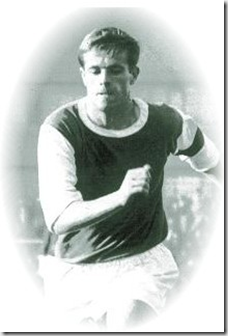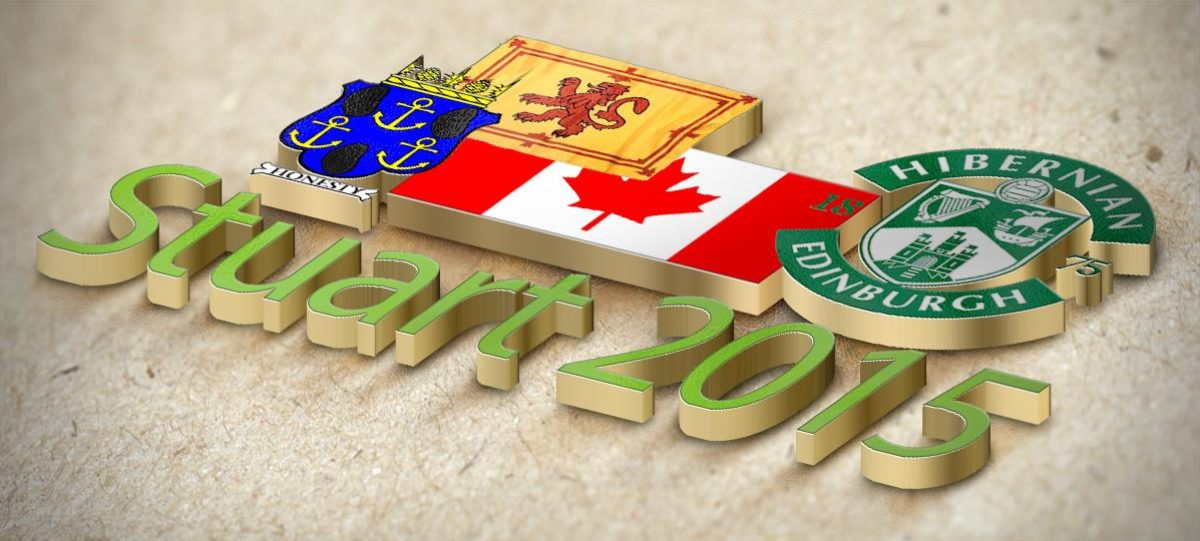Not back fours, nor 4X4’s, favoured by many players in this day and age as a mode of transport, but modern-day football and Hibernian FC has much to thank the number four for. Let no one assert to you that ‘good things come in three’s’ – for I know different. Even reputed Hibby Arthur Conan Doyle foresaw Pat Stanton decades earlier when he wrote of ‘The Sign of Four’ after all. Berry Gordy of Tamla Motown – he didn’t sign Three or perhaps Five Tops did he?

The Five Tops?
Nor even ‘The Four in Hand’ public house which proudly takes its place on the heavenly boulevard of Easter Road, much beloved by some of the Hibs faithful. ‘The Four’ could indeed hardly be better named if only it was referring to two of Hibernian’s greatest men, Pat Stanton and Franck Sauzee.
The number four on the field of play has a somewhat evocative image which has undeniably changed over the years. In my formative years when squad systems and numbering were  but a glint in a continental coach’s eye, the number four on the back of a jersey meant a certain kind of player inside it.
but a glint in a continental coach’s eye, the number four on the back of a jersey meant a certain kind of player inside it.
From our parent’s and grandparent’s days the number four was synonymous with the old fashioned right-half – the half-back whose prime responsibility was of a defensive nature, usually attempting to nullify the creative skills of his opposing inside-forward. Let it not be said though that this was not always the case as many powerhouse attacking performers came to adopt the pivotal midfield number.
Nowadays in the days of squad numbers of course the number four can often mean very little. Even before this time, certain centre-backs were ruthlessly stealing the jersey and adopting an unfamiliar position on the park for the big four on the back of the shirt.
Four Scottish Fours
Aside from my own club an image that always springs to mind when thinking of number fours is that of erstwhile Leeds United captain, Scot, Billy Bremner. This man was a stereotypical number four – all driving play, strong tackling and leadership. That one tended to hate Bremner when he played for the opposition only served to make one realise just how good he was. Like few others he was never out of the game, always making a huge contribution to his team. Funnily I never resented him much when he swapped the white of Leeds United for the Dark Blue of Scotland…
Once as a lad I was taken to a game at Arsenal’s Highbury when Leeds were the visitors and in their pomp. Bremner was his usual abrasive self and winding up most of North London that afternoon. It wasn’t big nor clever, but I recall a lone voice emerging from the North Bank that afternoon – above all others, “Billy Bremner? Billy Bremner? More like Billy F***ing B*ll*cks”. That’s the kind of effect Billy had on people. But he was good.
 Dave Mackay’s customary greeting to Billy
Dave Mackay’s customary greeting to Billy
Another from that era that epitomised this number and position was Celtic’s Bobby Murdoch. What a fine player he was and much underrated south of the border in spite of his 125 appearances for Middlesbrough I have to say. Murdoch was built like a tank and played like one. His play for Celtic ’s Lisbon Lions team in particular was inspirational and defined the role of an attacking right midfield player at that time. Hardly any wonder that Bobby is named at number four in Celtic’s greatest ever team selection, beating off some stiff opposition.
’s Lisbon Lions team in particular was inspirational and defined the role of an attacking right midfield player at that time. Hardly any wonder that Bobby is named at number four in Celtic’s greatest ever team selection, beating off some stiff opposition.
This number four must confer some kind of physical strength and assertiveness as my next choice will surely demonstrate; yes it’s that perennial shrinking violet, Graeme Souness! Hardly beloved north of the border except by Rangers fans naturally, Souness was a difficult man to like at times (any time) but not so difficult to respect when he ran over the white line. Never the quickest around the pitch, Souness made up for that factor with a tackle that must have felt akin to running into a brick wall, an immense range of short and long passing, and thunderous shooting from outside the box. Make no mistake Souness for all his hard-man tag could play the very deftest of passes; witness his killer delivery to Kenny Dalgish in footage of the 1978 European Cup Final when Kenny went on to convert his team mate’s feather-light pass. Not bad for a man with thunder in his boots.

‘Gis a job’. Even Souness’s moustache was ‘ard.
Another Scots four for much of his career was Don Masson. I had the enviable task of watching ‘The Don’ for many a season at Notts County’s Meadow Lane. There was nothing particularly exciting about watching the Notts team of journeymen footballers at that time but when The Don was strolling around the pitch on a Saturday afternoon, bossing his team around, organising his men and generally playing the game four or five passes ahead of everyone else on the pitch, you knew you were in the presence of a special player.

Don Masson ‘The Don’
Masson was the greatest passer of a football I have ever seen and that’s saying something. He had the complete armoury of deliveries and an irritating (to his opposition markers) method of shielding the ball until he was good and ready to play it. This ability saw him move on deservedly to the old English First Division to play in an attractive QPR side when he reached the advanced age of twenty-nine. From then on it was uphill to a superb midfield of the day in the Scottish national side which in my humble opinion he enhanced well. It was a pity that more didn’t see the worth of The Don earlier in his career however when was simply stunning ninety-nine weeks out of a hundred.
The Hibernian Sign of Four
And so to the moment of truth – Patrick Gordon Stanton! The beloved ‘King Paddy’ to the Hibernian faithful. There would be little point in me waxing too lyrical in my praise of Pat here as that has been well-documented many times…but oh well I’ll try anyway!
I believe that all of a Hibernian persuasion (and a great many that aren’t) understand that his true ability was never fully rewarded, apart from serving the team that he loved so well for so long. I’m not sure if others saw this but for me Pat Stanton didn’t actually run on the pitch so much as glide over it. Apart from being one of the most effective Pat had to have been one of the most elegant. He had that rarely seen ability of any great sportsman in any discipline of appearing to have lots of time to do exactly what he wanted with the ball. Never rushed and always immaculate he often stood out head and shoulders from the (often very good) players around him. Complement these qualities with those of strong running, excellent reading of the play and being strong in the tackle and here we have Hibernian’s very own world class player. Oh…they tell me he’s a gentleman too.
To come spinning full circle into more modern times I of course need to speak about the Pat Stanton and member of the Four-ism club for today’s generation of Hibs fanatics – Franck Sauzee. Similar to Pat, every Hibs fan has something to say on the subject of the man from Marseille and I am no different. What I can say is that after a lull in my Hibernian-watching ‘career’ this man single-handedly brought me back into the fold and out of the cold.
Up on a New Year’s visit to Edinburgh, I took my place in the old centre stand and settled down on a cold afternoon to watch the veteran I’d heard rave reports about. Franck strolled about the Easter Road majestically wearing a pair of green woollen gloves and looking a total master. I could barely take my eyes off of him so breathtakingly good was he. Fifty-yard pass after fifty-yard pass found it’s destination to a team mate’s feet, with the big man switching and directing play effortlessly from his berth at sweeper, rather like a conductor and his orchestra. Occasionally too, he would move forward and let go an exquisitely-timed thunderbolt of a shot that zinged narrowly wide of the target. The man had a rare talent and like away from the field of play so I’m told, went about his business with a similar panache, elegance and flair. Oh that we should see his like again as a little writing was truly on the Hibernian wall when the man retired to his native France.

‘Kaiser’ Franck
All the fours then.
Bremner
Murdoch
Souness
Masson
Stanton
Sauzee
Definitely not at sixes and sevens…

Забавно:)